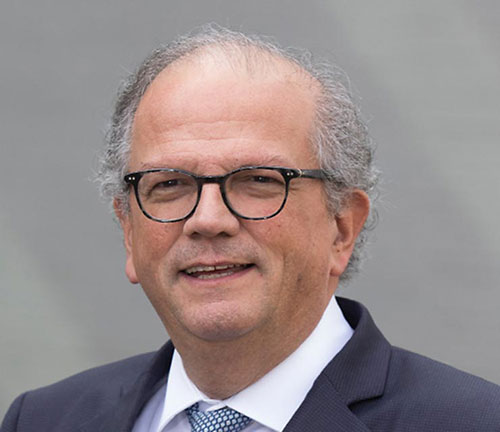The start of 2019 brought with it an important turn in the career of Alain Bernard at DEME, where he has worked for 38 years. After 12 years as CEO of the dredging company, the 63-year-old has passed the torch to Luc Vandenbulcke. But Bernard is by no means planning to slow down in the final years before retirement. Among his plans is to focus more on DEME’s daughter company Global Sea Mineral Resources (GSR), which is facing crucial years.
GSR has taken up the challenge of mining polymetallic nodules on the ocean floor, to extract valuable materials such as nickel, cobalt, copper, manganese and rare-earth metals. According to a recent report by the World Bank, these metals are indispensable for the growing world population, continued urbanisation, industrialisation and the production of batteries, solar panels and wind turbines.
“We need these metals for the technology to ensure our energy provision in an eco-friendly way and to be able to turn our backs on fossil fuels such as oil and coal,” says Bernard. “We also require sustainable sources of these metals to feed the circular economy. As metals are often stuck for ten to thirty years in a product, strategies such as recycling and redesigning are not sufficient.”
Bernard therefore points to the ways in which GSR contributes to several Sustainable Development Goals, the targets established by the United Nations as it works towards sustainable development by 2030.
There for the taking
These metals can also be found on land, but exploitation in mines on land is problematic for various reasons. “The Democratic Republic of Congo, for example, is abundant in such metals, but the political and social instability in the country makes it particularly difficult to work there,” says Bernard. “And mining on land has a major impact on the environment, both on nature and on the local population.”
That’s why DEME is now looking for these metals on the bottom of the ocean. “These nodules are there for the taking, you might say,” he adds. “We can harvest them without having to dig, because they are just lying on a soft surface. It also is a more efficient way of mining in another way: nickel, cobalt, copper and manganese don’t occur together on land.”
Targeted harvesting
In 2013, GSR received permission from the International Seabed Authority, responsible for the organisation and monitoring of mining activities in international waters, to explore the seabed in a concession zone in the Pacific Ocean for 15 years. The zone between Hawaii and Mexico has a surface of 76,728 km², more than twice the surface of Belgium.
Prospecting operations at a depth of no less than 4,500m using an underwater robot called Patania I have already mapped the zones where the most nodules are lying. Bernard: “That means we can harvest in a targeted way. In total, in just 15% of our concession area there are sufficient nodules for a few decades of work. This activity will expand gradually.”
Some environmental organisations are concerned, however, because the exploitation could disturb the vulnerable ecosystem on the seabed. Bernard doesn’t just dismiss that concern. “Such human activity always has effects on nature, but we’ll have to make choices,” he says. “It’s up to GSR to show that this activity can be done in a responsible manner. All relevant activities are carried out in full transparency and environmental organisations can closely monitor the whole process. Before the first mining operation takes place, everything will be regulated according to the highest scientific standards. That is unique.”
Next phase
DEME has been working with Ghent University on this project, which examines the flora and fauna deep under the water surface. The next phase, during which polymetallic nodules will be collected for the first time, will be monitored not only by GSR but also by a research vessel with international scientists – funded by the European Union.
In this next phase, which is expected to start in April, a new robot will be deployed: Patania II. This device is equipped with a suction nozzle that can collect and store nodules, before they are brought up to the ship. “The actual exploitation will be fully automated, which is another major difference compared to mines on land, where workers often have to deal with extremely difficult conditions.”
The next few years will be crucial for GSR. “Hopefully, we can then move towards developing a prototype robot for commercial exploitation,” says Bernard. “We also have to fine-tune the process for separating the materials, which is still being developed at the laboratory level. As well as all the technical challenges, everything concerning legislation and funding also has to be arranged.”
The financial picture
Bernard hopes that an exploitation permit can be obtained by 2026, so mining operations can begin then. To date, DEME has invested about €60 million in the project. The cost of building the prototype robot and a vertical transport system, which will confirm the final feasibility, is estimated at €250 million. The total cost of starting the exploitation on an industrial scale, which also involves building a factory and new ships, is assessed at €3 billion.


